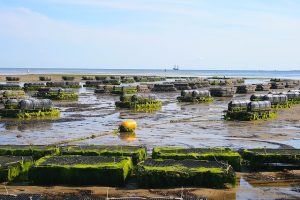Empowering humans with autonomous systems
How the maritime world offers unique opportunities for human-machine enhancement
At Shone, we are very vocal about the fact that autonomous and unmanned are not the same thing. So let’s dive a bit deeper into why and how we envision autonomous manned ships.
Reducing the problem space
First, a crew is made of a diverse set of people. Some of them are engineers who make sure that the ship’s power systems run smoothly. Others are electricians who repair signal lights, correct electrical defects on bridge equipment or verify that a radar turning unit is correctly set up. Deck ratings perform cargo operations, deck maintenance and help out with the watch. Even the deck officers have a variety of duties not related to standing a watch. To make an unmanned ship requires to address each and all of those duties to automate them which represents a titanic endeavor (pun intended). Because we believe that one needs to focus to truly deliver operational solutions, we don’t believe that it makes sense to pursue unmanned ships.
By reducing the problem to autonomous (navigation) technologies for deep sea we focus on a much narrower set of tasks to be performed: safely and efficiently steer a ship in a simple dynamic environment. But this is still an enormous undertaking. The automotive industry is slowly realizing how hard it actually is to make a fully autonomous system. That’s why our goal is to leverage the technologies required for autonomy to help humans from day 1 instead of waiting for the technology to reach full autonomy.
This means that we bring value to crews, operators and the industry in general right now
Leveraging crews’ abilities
The key point then becomes to identify what the crews are uniquely suited to perform versus what we can offload from them. To drive this point home I like to quote IndyCar driver JR Hildebrand
Humans have immensely high peak capability but often operate below peak performance; systems always operate at high performance but with lower peak performance.
body[data-twttr-rendered=”true”] {background-color: transparent;}.twitter-tweet {margin: auto !important;}
@reillybrennan @StephenZoepf It's at the center of the whole thing: humans have immensely high peak capability but often operate at < peak performance; systems always at high performance but w lower peak. Disproportionate effort going into solving the latter (IMO).
//platform.twitter.com/widgets.jsfunction notifyResize(height) {height = height ? height : document.documentElement.offsetHeight; var resized = false; if (window.donkey && donkey.resize) {donkey.resize(height);resized = true;}if (parent && parent._resizeIframe) {var obj = {iframe: window.frameElement, height: height}; parent._resizeIframe(obj); resized = true;}if (window.location && window.location.hash === “#amp=1” && window.parent && window.parent.postMessage) {window.parent.postMessage({sentinel: “amp”, type: “embed-size”, height: height}, “*”);}if (window.webkit && window.webkit.messageHandlers && window.webkit.messageHandlers.resize) {window.webkit.messageHandlers.resize.postMessage(height); resized = true;}return resized;}twttr.events.bind(‘rendered’, function (event) {notifyResize();}); twttr.events.bind(‘resize’, function (event) {notifyResize();});if (parent && parent._resizeIframe) {var maxWidth = parseInt(window.frameElement.getAttribute(“width”)); if ( 500 < maxWidth) {window.frameElement.setAttribute("width", "500");}}
In my opinion, this statement should drive every conversation about autonomy and Human Machine Interface. This is why 96% of maritime accidents are caused by human error, and why captains can perform insanely accurate docking.
This means that we need to focus on automating the simple recurrent tasks, while providing high quality information to the officers at the times they need to realize complex maneuvers and procedures.
Maritime’s specificities
To a large extent, the shipping industry is already leveraging technologies to assist humans. GPS, radar, AIS are all systems that help officers get a better sense of the vessel’s overall situation. But three critical tasks are still exclusively performed by seafarers: the lookout (looking around the bridge to identify targets), sensor fusion (building a representation of the environment from all the available sensors) and trajectory planning (deciding how to safely navigate the environment).
What’s interesting is that autonomous technologies have focused extensively on these three tasks. The “lookout” of a self-driving car is done by computer vision algorithms that continuously analyze the surroundings of the vehicle and automatically detect and classify objects. This information then gets fused with other sensor inputs to create a map of the environment that is used to compute the trajectory that should be followed. And we are bringing these advances to the maritime industry!
Actually, we have a few big advantages over the automotive industry:
- There are already multiple (at least 4 including the master) officers who can stand watch on a ship.
- Ships are already fitted with multiple sensors such as radars, AIS (ship-to-ship position broadcasting) and GPS.
- Reaction times are much larger for ships. A car needs to brake almost instantly when it detects a pedestrian crossing in front of it while a ship usually has much more time to react.
- The crews are trained and professional.
When it all comes together
To summarize we:
- focus on navigation
- augment the crew on the tasks they are not naturally good at
- and have a deep knowledge and understanding of the maritime industry
This puts us in an ideal situation to work alongside the crews, the owners and the operators in order to build a solution that seamlessly integrate into operating procedures while leaving the necessary oversight and control to the onboard officers. Because we know the tech behind autonomy extremely well, we can identify what blocks we can adapt to the maritime industry, and which blocks don’t apply. We always put the humans at the center because our goal is to support the crew when they need it, and help them stay rested, alert and safe.
We are building the world’s best copilot for cargo ships, empowering humans onboard and ashore
If this resonates with you and you want to learn more about us, drop me a note at cl*****@***ne.com !
Empowering humans was originally published in Shone Blog on Medium, where people are continuing the conversation by highlighting and responding to this story.
